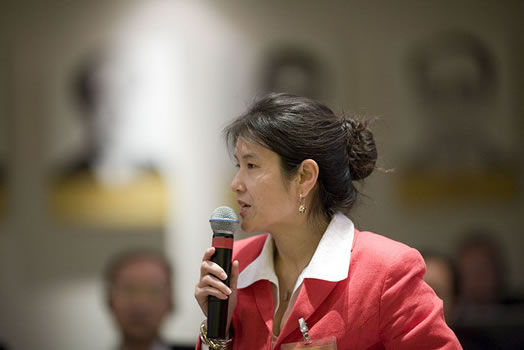
(Photo by MITCHELL)
In your quest to share information with your audience, how much should you share with them? Is it better to overwhelm them with stories and facts or just dole out a few tidbits?
If you provide not enough, then people won’t be convinced. The skeptics in the audience will want proof of what you’re trying to tell them. Your words alone won’t suffice, and the result is likely to be a “thin” talk.
If you provide too much information, you’re likely to lose the audience. They’ll be spending so much time trying to remember or record all the details, that they’ll be focused on what you just said, rather than what you’re saying now. And at some point, their concentration will waver, and they’ll be lost. They’ll have to decide whether it’s hopeless to try to keep up with you, or if the sheer volume of information somehow is covering up some lack of confidence (quantity of data, rather than quality of data).
So, what’s just right? It depends upon your audience. If you’re talking to people who need to see the data (scientists, for example), then the proof’s more in your data than your words. You need to convince them beyond the shadow of a doubt of your point. Otherwise, you want to keep everyone on the edge of their seats. You need to pace the stories and facts so that they “get it”, and then tease them with what’s coming. And then you “wow” them with another, giving a sufficient pause for them to digest the last story.
If you’re unsure if your pacing is right, have a friend or colleague sit in the audience and have them watch your audience. When do they start fidgeting or pulling out their cell phones? Keeping connected with the audience is a beautiful dance. Make sure that when you’re leading crowd, that they’re following. Otherwise, no one wins.









